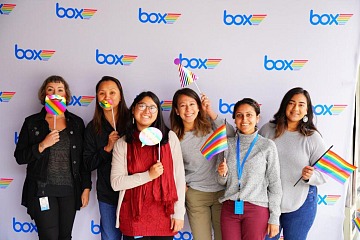Belonging, Diversity & Inclusion, Employee Experience, ERGs
"The social object that unites people isn't a company or a product; the social object that most unites people is a shared value or purpose."
― Nilofer Merchant, 11 Rules for Creating Value in the Social Era
As workplace diversity and inclusion programs are becoming more prevalent, Employee Resource Groups (ERGs) are gaining in popularity.
ERGs have been around since the 1960s when black workers at Xerox organized to discuss race-based tension in the workplace. They are increasingly relevant today as gender issues, questions of personal identity and politics affect everyone.
So what are Employee Resource Groups (ERGs)?
Employee Resource Groups are voluntary, employee-led groups whose aim is to foster a diverse, inclusive workplace aligned with the organizations they serve.
They're usually led and participated in by employees who share a characteristic, whether it's gender, ethnicity, religious affiliation, lifestyle, or interest. The groups exist to provide support and help in personal or career development and to create a safe space where employees can bring their whole selves to the table. Allies may also be invited to join the ERG to support their colleagues.
Today, according to TopMBA, ERGs are found in 90% of Fortune 500 companies. Unsurprisingly, many Great Place To Work CertifiedTM companies, including Ernst & Young LLP, KPMG LLP, Zillow, and AT&T, have ERGs.
Are Employee Resource Groups effective?
ERGs are credited with accomplishing goals such as:
- Improving work conditions for alienated workers. ERGs help marginalized groups and remote workers feel connected through a common cause or interest.
- Making the physical work environment better for everyone. For example, creating gender-neutral restrooms and improving physical or visual accessibility for employees.
- Bringing employees together in a safe place where conversations can flow freely and everyone can feel comfortable sharing their experience.
- Identifying and developing leaders in the making. ERG leaders can help identify emerging talent that might otherwise go overlooked due to unconscious bias. Participants can find new opportunities to connect with mentors and supportive colleagues across business units.
- Tackling company-wide challenges. ERGs designed to address a specific topic or issue can help keep leaders in the know about issues or wins that are top of mind for the group members.
- Lowering the chance of suppressed frustrations. ERGs can help surface an issue that might be too risky for an individual to share alone. This can help address problems quickly and alleviate toxic environments.
Why are Employee Resource Groups important?
We know that that innovation can only flourish when employees feel safe bringing their whole selves to work.

Image: Employee Resource Group members at Zillow get ready to march the Pride parade
ERGs build high-trust relationships that help companies flourish. The groups foster a sense of belonging and inspire conversation, bring new ways to look at issues and drive innovation.
Many executives at companies with ERGs find that they're a critical resource for gaining deeper insights from their Trust Index™ survey results. When there are gaps in experiences, leaders often turn to ERGs to ensure that everyone, regardless of role or demographic, can succeed.
How should you start an Employee Resource Group?
Effective ERGs are both top-down and bottom-up. Not only must they have buy-in from the employees whom the group is meant to serve and from their colleagues as allies, but also from the executive management team. For an ERG to be successful, senior leaders need to support, fund, and endorse.
Here is how to start your own ERG:
1. Gather starting data. ERGs can help with the employee experience, but it’s important to know where you’re starting from. Get a baseline measurement of employee experience with an employee survey and analytics tool and identify any gaps among groups. You’ll want to track this metric as the ERG grows.
2. Set guiding principles. Ask group members how they envision the ERG’s vision and mission. Who can be a member? What are the expectations of every member, for both themselves and for each other? Set these guidelines upfront to ensure everyone has a clear vision, as well as the space to ask if something is unclear.
3. Seek executive sponsorship. One ERG best practice is to ensure that each ERG has a senior leader as their executive sponsor who not only acts as a bridge between the C-suite and the ERG, but who is also a full participant in the ERG’s mission. UKG’s ERGs have 2-3 executives that support them to reach their goals.
4. Offer growth opportunities. While an ERG is first and foremost a safe space for underrepresented groups, it should also be a place where those members can pursue professional development. Leadership training or education on everything from emotional intelligence to time management could be ERG offerings.
Once you’ve set up your ERG, invite all employees to participate, either as a member of the specific group or as an ally.
Subscribe to the Great Place To Work newsletter and learn how to create a high-trust workplace regardless of where, when or how your employees work.
Earn the distinction that attracts great job applicants with Great Place To Work Certification™.













